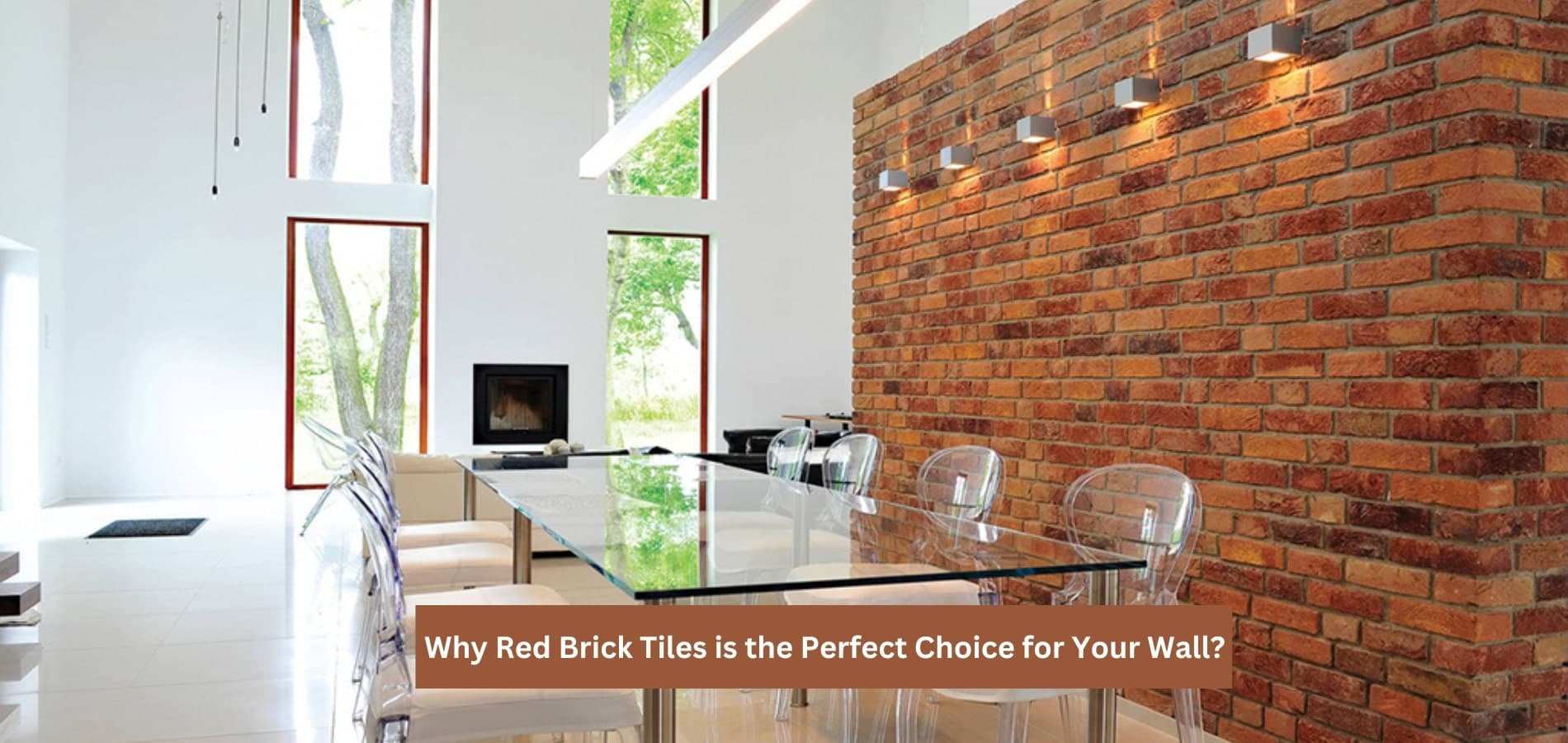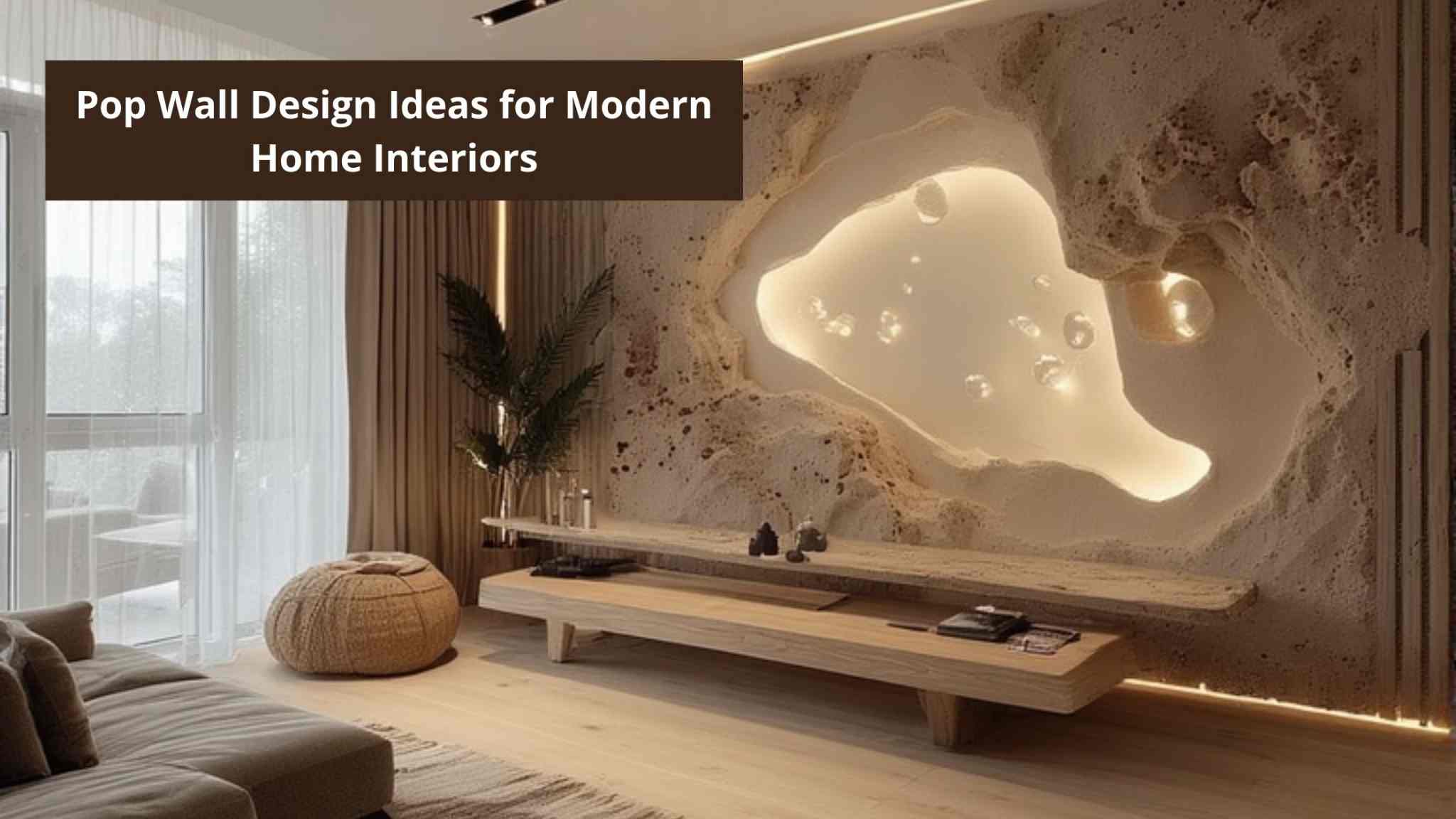Why Red Brick Tiles is the Perfect Choice for Your Wall?

What is Red Brick Tiles
When someone mentions 'red brick tiles', the image that often comes to mind is of textured walls that appear both natural and vintage. They’re raw, earthy, and full of character, and more importantly, they’re tough.
Over the past few years, the popularity of red brick wall tiles has gone beyond exteriors. Now, they’re part of kitchens, bathrooms, cafes, and even bedrooms. The texture and colour do not let them fade into the background, nor do they feel too loud.
Learn why Red Brick is not just about good looks but also about making a sustainable choice for building that lasts generations.
Why Red Brick Tiles is the Perfect Choice for Your Wall?
If you've ever walked through the lanes of old Delhi or gazed at the rustic buildings of Pondicherry, you would have seen how Red Brick not only stands the test of time but also gives a grand look. From the Red Fort to the modern-day education Mecca, IIM Ahmedabad, there's something incredibly grounding about Red Brick. To give the same charm and utility, Red Brick tiles like Red Brick Terra are offered from Simpolo Tiles and Bathware. These tiles can be found in various applications, from residential spaces to commercial buildings. Their look complements various architectural styles.
But did you know that this red colour is a big nod to our green efforts to save planet Earth? In an age where climate consciousness is not an afterthought but central to the planning process, choosing Red Brick tiles for walls can help you stand out from the rest. In this post, we will explore the reasons why Red Brick tiles should be a top choice for your sustainable building projects.
Where to Use Red Brick Tiles
Most of us are looking for something timeless when designing our spaces. With options in brick tiles for walls and various modern patterns, at Simpolo Tiles and Bathware, we strive to give you choices that combine beauty with strength.
Residential Spaces
Start at your home if you are keen to work with red brick wall tiles.
- A textured red brick wall tiles setup behind your TV unit or along one side of the hall can do wonders. It breaks the monotony and adds just the right amount of drama.
- In the kitchen, red brick tiles can handle heat and stains better than paint or wallpaper. And with the right grout and sealant, maintenance is no hassle. Many homeowners use red brick tiles for walls in open kitchens, especially around cooking areas. When paired with black or white cabinets, you get a sharp contrast that looks clean but still full of character.
- On the contrary, a muted brick finish behind the headboard can create a relaxed, grounded mood in your bedroom. Bathrooms, though less common, are seeing more modern brick tiles used as part of feature walls or vanity backdrops.
Commercial Spaces
- Walk into any trendy cafe or restaurant, and you’ll likely spot brick tiles design somewhere on the wall. That’s because red brick wall tiles give off a raw, unfinished vibe that pairs well with industrial lighting and exposed ceiling pipes. For a small cafe or a lounge bar, tiles like Terra Red Brick Texture create a welcoming, lived-in feel.
- In offices, especially those in creative or boutique settings, modern brick tiles play a role. Used sparingly on a reception wall or breakout corner, they add a stylish touch to the space. They also give a kind of structure to the space.
Real Also: 5 Advantages of Using Tiles on a Houses Interior and Exterior
Benefits of Red Brick Tiles
Choosing a Red Brick tile for walls from Simpolo Tiles and Bathware, for your space can bring a unique blend of timeless charm and modern appeal. It holds numerous advantages including durability, versatility, and aesthetic warmth. Here are some of the significant features of Red Brick tiles:
Historical Significance and Timeless Appeal
From buildings displaying colonial architecture to the academic institutions of today, Red Brick has been a silent yet strong character in many stories. Its deep, rich colour and the textured finish have a unique visual appeal enhancing the overall design of a space. It's this understated elegance and historical significance that help it blend into any era's narrative, making it a favourite in both traditional and contemporary designs.
Eco-friendly Red Brick Tiles
When we talk about building materials, the conversation often steers towards their environmental impact. Red Bricks, made from natural clay, have a relatively kind footprint compared to many modern materials that rely on mining and chemical processes. Some brick makers now use husk and other bio-wastes to fire up their kilns, which is a big step towards sustainable manufacturing.
Keeping It Cool
Remember the cool rooms of your grandparents' brick-built homes during those scorching summer holidays? Thanks to its excellent thermal mass, Red Brick absorbs heat during the day and releases it slowly, making rooms feel cooler during the day and warmer at night.
This isn't just comfortable; it cuts down on energy bills by reducing the need for air conditioning and heating. With recent temperatures soaring even higher, Red Brick tiles can offer a cooling effect. So, it is best to discuss with your architect and civil contractor on using this as a main material for your house.
Durability and Strength
Red Brick tiles are durable, require minimal maintenance, and often develop character over time, enhancing their aesthetic appeal. These tiles do not fade easily and require minimal maintenance. It stands its ground against sun, wind, and rain, and quite easy to clean if it even accumulates dust.
Recycle and Reuse
Red Brick tiles can be recycled and reused. When old structures are renovated or demolished, Red Brick tiles can be salvaged and incorporated into new designs. This ability to be recycled and creatively reused highlights the sustainable nature of Red Brick tiles, making them an excellent choice for environmentally conscious building practices.
Red Bricks Help Keep Moisture Out
Red Brick excels at keeping moisture out, making it ideal for humid climates or areas prone to rain. Its dense structure prevents water absorption, which helps avoid dampness and the growth of mould inside walls. This feature ensures that your home remains dry and airy, improving the comfort and health of living spaces while minimising maintenance efforts.
Get Natural Protection Against Termites
Red brick tiles are naturally resistant to pests, such as termites, due to their non-organic composition. Unlike wood, which can be a feast for termites, Red Brick’s sturdy clay composition ensures that it remains termite-resistant. This durability not only protects the structural integrity of your home but also preserves its beauty for generations, without the need for chemical treatments.
Fire Resistance for Safety
Red brick tiles have fire-resistant properties, adding an extra layer of safety to your space. Capable of withstanding high temperatures, Red Brick acts as a barrier against fire.
This fire-resistant quality makes red brick tiles a smart choice for enhancing safety in any building.
Flexing with Design
Whether you're going for a chic minimalist look or a vibrant, eclectic style, Red Brick tiles can adapt. Paint it, leave it bare, or mix it with glass and steel, it'll support your vision while adding its sustainable and durable charm.
Also Check: Beautiful and Versatile Vitrified Tiles
Maintenance and Care for Red Brick Tiles
Maintaining red brick tiles for walls doesn’t have to feel like a big task. But like with any good material, a little regular care goes a long way.
- Use a soft brush or a damp cloth to remove dust. For kitchens or cafes, red brick wall tiles that see grease buildup, a gentle tile cleaner works best.
- Try not to drag furniture against the red brick wall tiles. While they are hard, sharp metal corners can cause surface scratches. In humid areas, ensure proper ventilation to prevent damp patches.
- Also, keep an eye on joints. If you notice crumbling or gaps forming, a touch-up with matching grout can easily fix the issue.
Learn why Red Brick is not just about good looks but also about making a sustainable choice for building that lasts generations.
Conclusion
As we wrap this up, let's appreciate that Red Brick is so much more than just a design element in building. It’s a blend of style, history, and green building principles. Red Brick tiles have high endurance, have incredible versatility and are environmentally friendly. It adapts to both classic and contemporary designs.
So, if you’re thinking about giving your space a makeover or starting a new project, why not pick a Red Brick tile from Simpolo Tiles and Bathware? It’s about making a statement that respects our heritage while building a sustainable future.
FAQs About Red Brick Tiles
Can Red Brick Tiles Keep My House Cool?
Absolutely! Red Brick tile’s thermal properties naturally regulate indoor temperatures, keeping your house a few degrees cooler in the summers.
Are Red Brick Tiles Expensive To Maintain?
Not at all. Red Brick tiles are low-maintenance, which means they require very little upkeep over time. This saves you both money and effort, making them a cost-effective option.
Is Red Brick Tile Environmentally Friendly?
Yes, indeed! These tiles are made from natural clay and can be recycled completely. This makes them a fantastic option for eco-conscious building, aligning with sustainable construction practices.
Can Red Brick Tiles Look Modern And Stylish?
Definitely! Red Brick Terra tiles from Simpolo Tiles and Bathware, offer a lot of versatility in design. Whether you're aiming for a rustic look or a modern aesthetic, Red Brick can be adapted to fit your style perfectly, making it a stylish choice for contemporary architecture.
Can I Reuse Red Brick Tiles From An Old Building?
Indeed, you can. Red Bricks tiles can be reclaimed and reused in new constructions, adding a layer of sustainability to your building practices. It's not just eco-friendly; it also adds historical charm to new structures







